A survey conducted by Duke University showed that the number of close friends per capita in the United States dropped from three to two in the 20 years from the 1980s to the early 2000s. This indicates that loneliness is becoming more severe. Long-term or severe loneliness can cause certain emotional disorders, reduce people's mental health, and lead to various boredom and venting attacks, as well as various mental diseases and ideological problems. Interpersonal communication can alleviate loneliness to some extent, but for various reasons it sometimes does not work very well, so many people turn to pets for companionship. Pet products can improve the happiness of pets and promote human-pet interaction, thereby better alleviating loneliness.
In 2022, there are more pets in the world than ever before. Compared to the period before and after the epidemic, the number of pets brought home has increased by 70%. According to statistics, the role of pets in people's lives has changed imperceptibly, from helping people guard their homes and satisfy their curiosity in the past, to becoming the closest companions in people's lives. Interactive pet products have also evolved in this context.
American psychologist William Schutz proposed the theory of interpersonal needs, which includes emotional needs, affiliation needs, and mastery needs.

The need for individuals to love or be loved, and the need for individuals to establish and maintain close emotional relationships with others in interpersonal interactions. Emotional needs are present throughout a person's life. In general, emotional needs are stronger in infancy, adolescence, and old age.
an individual's need to connect and interact with others, to belong to a group, and to establish and maintain satisfying relationships with others. Inclusion needs are the most basic needs in interpersonal relationships and exist in all age groups and occupations.
the need for an individual to control or be controlled by others, and the need for an individual to establish or maintain a satisfactory interpersonal relationship with others in terms of power relations. In fact, every member of society has these needs.
Similar needs exist in the interaction between humans and pets. Based on this theory, we present the Human-Pet Interaction Model.
The essence of the human-pet relationship can be summarized as the human-pet interaction model.
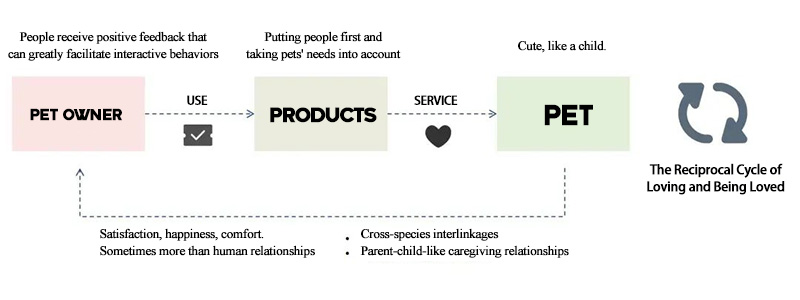
People can use pet products to take care of their pets, and pets are like a child who is still immature and very lovable, so the satisfaction, happiness, and comfort they bring are not available in human relationships. When people receive positive feedback, they will take more active care of their pets, creating a "love and be loved" loop.
Mookkie

This product ensures that the pet gets the right amount of the right quality food every day and prevents other pets from fighting over it. The panel only opens when the front camera detects a matching pet approaching. This makes the pet feel special and also ensures that the pet is eating healthy.
#Emotional needs #Dominance needs
FluentPet
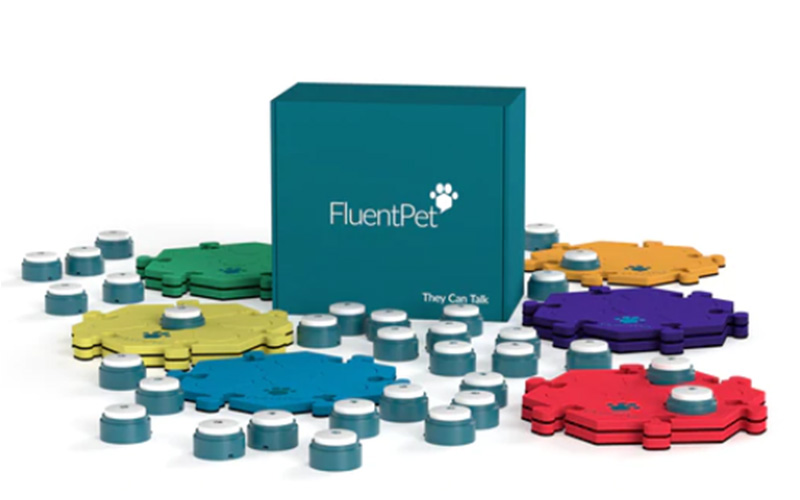
FluentPet is a unique pet button system that allows us to teach our dogs to use words and communicate their thoughts to us. The system consists of hexagonal tiles or "HexTiles" with buttons that can be customized to say different words when pressed. This product brings people and pets closer together and allows them to have a more intimate relationship.
#Need for inclusion #Reciprocal love and affection #Satisfaction
Renault Pet Communication Device

The front of the motorhome is the human space and the back is the pet space. People can work in the front and pets can climb and play freely in the back, where people and pets can interact. At the same time, the lower seat can prevent pets from getting carsick. Even on long trips, people and pets can still interact intimately, rather than keeping pets in an airtight backpack or cage.
#Emotional needs #Satisfaction
Ping Pong
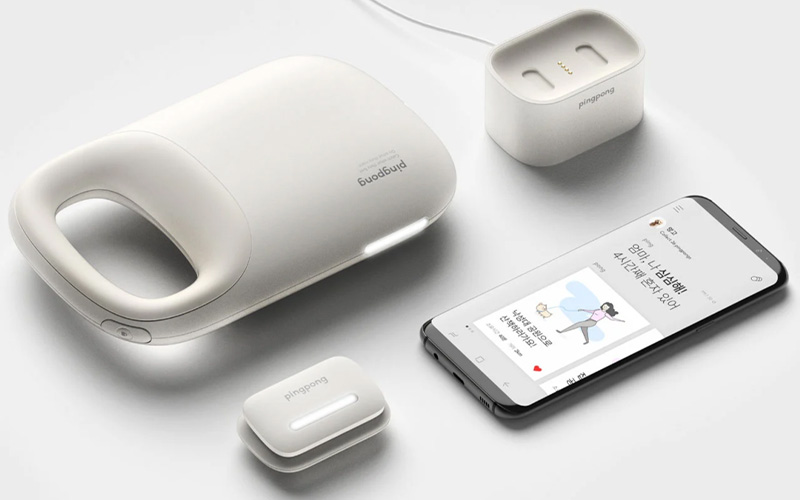
Ping Pong is a communication and relationship enhancer that captures subtle emotional changes in pets and expresses their moods in different colors, helping owners better understand their pets' behavior.
#Emotional Needs#Dominance Needs
Ebo Catpal

Ebo is a robotic pet companion. When the owner is away and misses the pet, Ebo can overcome the limitations of time and space. No matter where you are, you can use your mobile phone to play with your pet, talk to it, and monitor or record its health.
#Emotional needs #Dominance needs
Air Cage
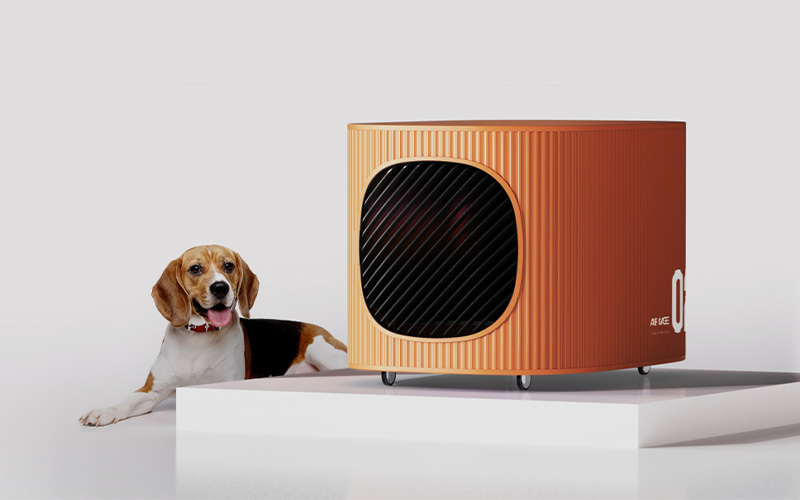
The new Air Cage service ensures the safety of pets traveling abroad by air. To complete the adaptation of the cage and the pet, the airline begins the service by delivering the cage to the owner's home. During the flight, the owner can check the pet's status in real time through the device built into the Air Cage.
#Dominance needs
Piavita - Veterinary Care Assistant

The Piavita system is an intelligent assistant that is the first in veterinary medicine to measure ECG, heart rate, R-R interval, core body temperature, respiration and activity, even continuously and non-invasively through the animal's coat. The Piavita system and its wireless sensor technology enable veterinarians to access vital patient data anytime, anywhere, and pet owners to keep track of their pet's health at all times.
#Dominance Needs Inclusion Needs
Aquatics and Exotics
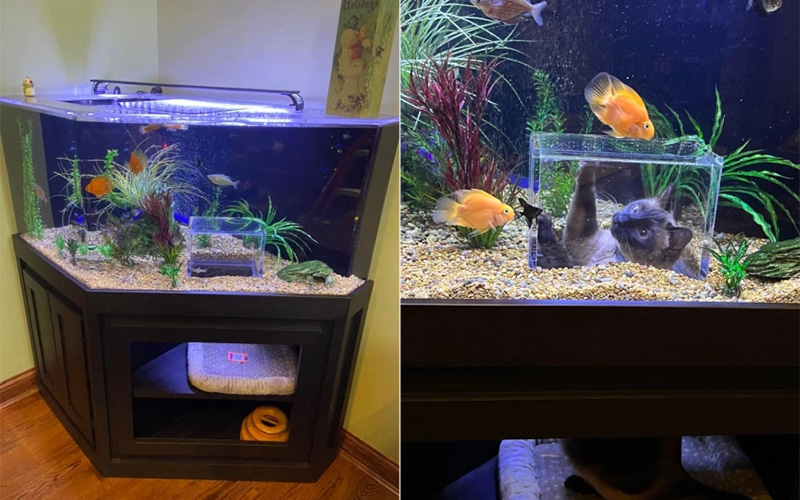
The aquarium is placed on a wooden cabinet with a hole for the cat to view the fish through a special window, allowing the cat to enter directly into the aquarium and look into the viewing window. This product breaks down the barriers between owner and pet and is fun for both.
#Emotional needs #Inclusive needs #Fun
Groomatic

This is an automatic cat brush that can be wall-mounted or attached to any flat surface using the adhesive pads provided and can be attached to thin objects using zip ties. When a cat approaches, it automatically starts and selects the correct direction of rotation for the cat to give it the perfect massage. The brush stops rotating when the cat leaves. This product allows pets to enjoy a massage experience whether the owner is present or not.
#Caring needs
Petcube Cam
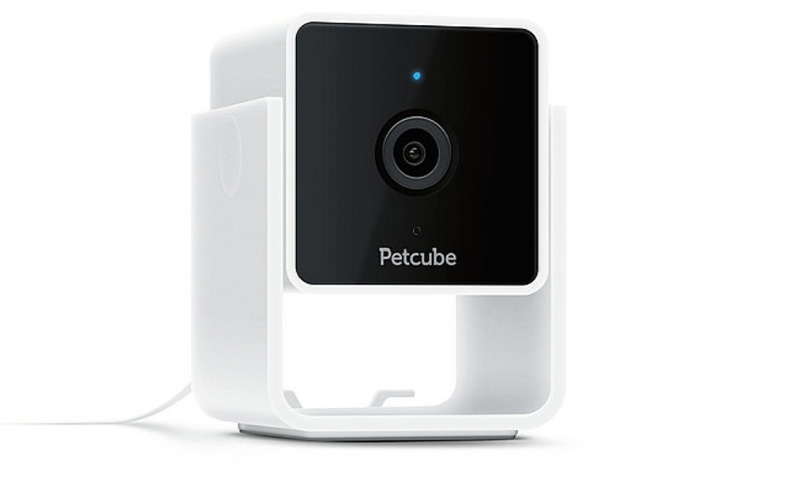
This camera is designed to meet the needs of pet owners. This smart camera integrates 1080p HD video, two-way audio, night vision mode, and AI-controlled sound and motion alerts, allowing owners to keep up with their pets and interact with them remotely.
#Dominance Needs
From the cases above, we can see that the needs for human-pet interaction are mainly reflected in emotional needs and dominance needs. The main needs for this type of product are: the need to interact with pets remotely; the need to better interact with pets through small toys and small scenes.
We can see that there are two main design paths for interactive pet products:
One is to provide pets with their own comfortable space or products and leave room for interaction with the owner.
The second is to use technology such as cameras, sensors, and artificial intelligence to monitor the pet's movements in real time so that the owner can pay attention to it in a timely manner and take appropriate action if necessary, thereby increasing the frequency of human-pet interaction.
puppylulu specializes in this area and designs and develops toys and products that are more suitable for interaction on this basis. At the intersection of technology and design, we create human-centered interactive products that take into account the needs of pets and promote the healthy development of the human-pet relationship.
Copyright ©2023 All Rights Reserved by Ningbo Makorn Pet Products Co., Ltd